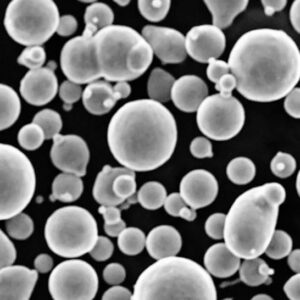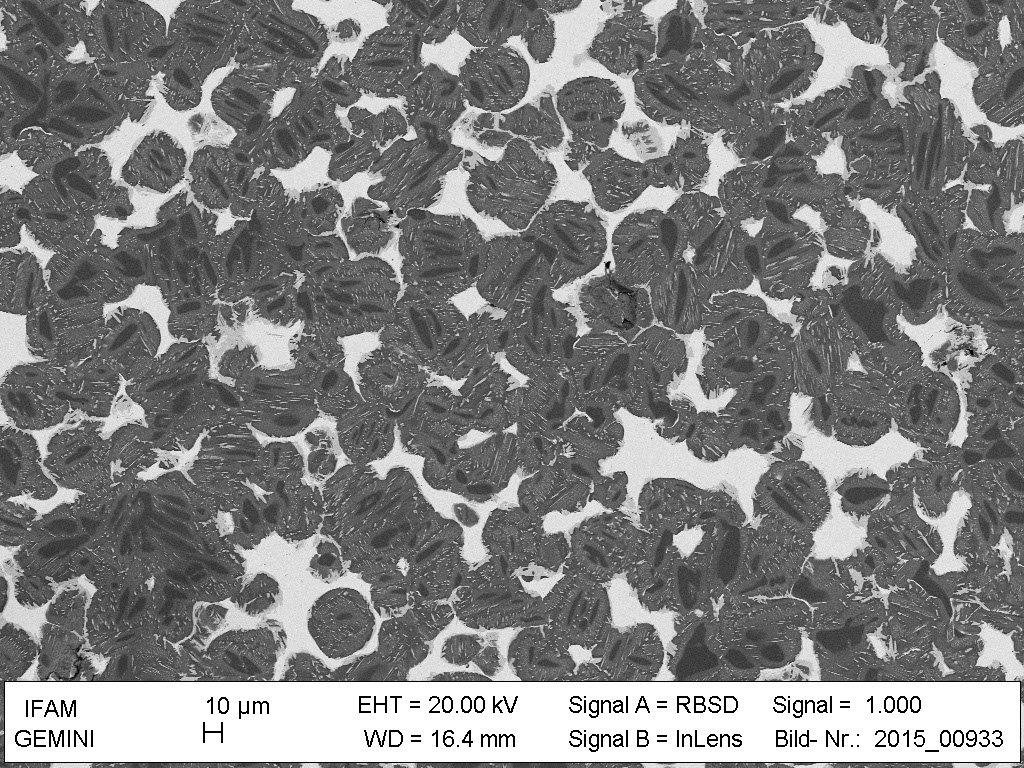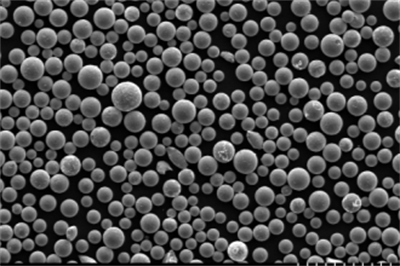Batch-basierte entbinderte Sinteranlagen stellt einen bedeutenden Fortschritt bei der Herstellung und Verarbeitung von Metallpulvern dar. Dieser Industriezweig ist führend in der Herstellung hochwertiger, präziser Metallteile für verschiedene Anwendungen. Lassen Sie uns in die Details gehen und die Feinheiten und Vorteile dieser Technologie aufdecken.
Überblick über die Industrie der chargenbasierten entbundenen Sinteranlagen
Chargenweise entbinderte Sinteranlagen sind in der Metallpulverindustrie von entscheidender Bedeutung. Diese Technologie ist darauf ausgelegt, Metallpulver in kontrollierten, wiederholbaren Chargen zu entbindern und zu sintern, um eine gleichbleibende Qualität und Leistung zu gewährleisten. Zu den wichtigsten Details gehören die Art der verwendeten Metallpulver, die beteiligten Prozesse und die Anwendungen der fertigen Produkte.

Arten und Eigenschaften von Metallpulvern
Metallpulver zur Verwendung in Batch-basierte entbinderte Sinteranlagen sind in ihrer Zusammensetzung und ihren Eigenschaften sehr unterschiedlich. Hier finden Sie eine detaillierte Tabelle mit einer Zusammenfassung einiger gängiger Metallpulver:
| Metall-Pulver | Zusammensetzung | Eigenschaften | Merkmale |
|---|---|---|---|
| Rostfreier Stahl 316 | Fe, Cr, Ni, Mo | Hohe Korrosionsbeständigkeit, Festigkeit | Weit verbreitet in der Medizin- und Lebensmittelindustrie |
| Titan Ti-6Al-4V | Ti, Al, V | Hohes Verhältnis von Festigkeit zu Gewicht | Luft- und Raumfahrt, biomedizinische Anwendungen |
| Kupfer C11000 | Cu | Ausgezeichnete elektrische Leitfähigkeit | Elektrische Komponenten |
| Nickellegierung 625 | Ni, Cr, Mo, Nb | Ausgezeichnete Korrosions- und Oxidationsbeständigkeit | Marine und chemische Verarbeitung |
| Aluminium 6061 | Al, Mg, Si | Leichtes Gewicht, gute mechanische Eigenschaften | Automobilindustrie, Luft- und Raumfahrt |
| Eisen Fe-PM | Fe, C | Hohe Festigkeit, gute Bearbeitbarkeit | Automobilteile |
| Kobalt-Chrom (CoCr) | Co, Cr, Mo | Hohe Verschleißfestigkeit, Biokompatibilität | Medizinische Implantate, zahnmedizinische Anwendungen |
| Wolframkarbid (WC-Co) | W, C, Co | Äußerst hart, verschleißfest | Schneidwerkzeuge, Schleifmittel |
| Bronze (Cu-Sn) | Cu, Sn | Gute Verschleißfestigkeit, Bearbeitbarkeit | Lager, Buchsen |
| Magnesium AZ91D | Mg, Al, Zn | Geringes Gewicht, gute Festigkeit | Luft- und Raumfahrt, Automobilindustrie |
Anwendungen von chargenbasierten entbinderten Sinteranlagen
Die Anwendungsmöglichkeiten für chargenweise entbinderte Sinteranlagen sind sehr vielfältig. Die folgende Tabelle zeigt, wo diese Metallpulver verwendet werden:
| Anmeldung | Beschreibung |
|---|---|
| Luft- und Raumfahrt | Leichte, stabile Komponenten wie Turbinenschaufeln, Strukturteile |
| Medizinische | Biokompatible Implantate, chirurgische Instrumente, Zahnprothetik |
| Automobilindustrie | Motorteile, Getriebe, Lager, Bremsteile |
| Elektronik | Leitfähige Komponenten, Steckverbinder, Kühlkörper |
| Industrielle Maschinen | Verschleißfeste Teile, Schneidwerkzeuge, Gussformen |
| Energie | Komponenten für Turbinen, Öl- und Gasanlagen |
| Konsumgüter | Hochfeste, korrosionsbeständige Produkte wie Küchenutensilien |
| Marine | Korrosionsbeständige Teile für Meeresumgebungen |
| Verteidigung | Robuste, langlebige Teile für militärische Ausrüstung |
| Chemische Verarbeitung | Korrosionsbeständige Ausrüstung für den Umgang mit Chemikalien |
Spezifikationen, Größen, Güteklassen und Normen
Beim Umgang mit chargenweise entbinderten Sinteranlagen ist es wichtig, die Spezifikationen, Größen, Qualitäten und Normen zu kennen. Hier ist eine detaillierte Tabelle:
| Metall-Pulver | Größen (µm) | Klassen | Normen |
|---|---|---|---|
| Rostfreier Stahl 316 | 5-45 | A, B, C | ASTM F138, ISO 5832-1 |
| Titan Ti-6Al-4V | 15-45 | Klasse 5 | ASTM B348, ISO 5832-3 |
| Kupfer C11000 | 10-75 | 110, 122 | ASTM B170, C10100 |
| Nickellegierung 625 | 15-45 | NA625 | ASTM B443, AMS 5599 |
| Aluminium 6061 | 10-45 | T6 | ASTM B211, B221 |
| Eisen Fe-PM | 45-150 | Verschiedene | MPIF-Norm 35 |
| Kobalt-Chrom (CoCr) | 15-45 | F75 | ASTM F75, ISO 5832-4 |
| Wolframkarbid (WC-Co) | 0.4-30 | Verschiedene | ISO 3878, ASTM B777 |
| Bronze (Cu-Sn) | 20-150 | Verschiedene | ASTM B22 |
| Magnesium AZ91D | 45-150 | AZ91D | ASTM B93, B94 |
Lieferanten und Preisangaben
Die Suche nach zuverlässigen Lieferanten und die Kenntnis der Preisgestaltung sind in der Branche der chargenbasierten entbinderten Sinteranlagen entscheidend. Hier ist eine Tabelle mit einigen bekannten Lieferanten und ungefähren Preisen:
| Anbieter | Metall-Pulver | Preisgestaltung (USD/kg) | Anmerkungen |
|---|---|---|---|
| Tischlertechnik | Edelstahl 316, Titan Ti-6Al-4V | $50 – $150 | Hochwertige Pulver für Medizin und Luft- und Raumfahrt |
| Höganäs AB | Eisen Fe-PM, Bronze (Cu-Sn) | $10 – $50 | Breites Spektrum an industriellen Anwendungen |
| Sandvik Werkstofftechnik | Nickellegierung 625, CoCr | $100 – $300 | Spezialisiert auf Hochleistungslegierungen |
| Praxair Oberflächentechnologien | Aluminium 6061, Wolframkarbid (WC-Co) | $20 – $200 | Hervorragend geeignet für die Luft- und Raumfahrt und Schneidwerkzeuge |
| Fortgeschrittene pulverförmige Produkte | Kupfer C11000, Magnesium AZ91D | $15 – $100 | Elektrische und automobile Anwendungen |
Vorteile und Grenzen von chargenbasierten entbinderten Sinteranlagen
Das Verständnis der Vor- und Nachteile von chargenbasierten entbinderten Sinteranlagen kann helfen, fundierte Entscheidungen zu treffen. Hier ist ein Vergleich:
| Aspekt | Vorteile | Beschränkungen |
|---|---|---|
| Qualitätskontrolle | Konsistente, hochwertige Ausgabe | Erfordert präzise Kontrolle und Überwachung |
| Vielseitigkeit | Kann eine Vielzahl von Metallpulvern verarbeiten | Begrenzt durch die Losgröße |
| Kosteneffizienz | Niedrigere Betriebskosten im Vergleich zu kontinuierlichen Prozessen | Die Anfangsinvestitionen können hoch sein |
| Komplexe Formen | Fähigkeit zur Herstellung komplizierter Geometrien | Einige Formen können eine zusätzliche Bearbeitung erfordern |
| Energieverbrauch | Oft energieeffizienter als andere Methoden | Die Energiekosten können immer noch erheblich sein |
| Skalierbarkeit | Leicht skalierbar für unterschiedliche Produktionsmengen | Scale-up kann zusätzliche Ausrüstung erfordern |
| Auswirkungen auf die Umwelt | Geringere Emissionen und Abfälle im Vergleich zu herkömmlichen Methoden | Die Entsorgung von Entbinderungsmaterialien kann eine Herausforderung sein |
Technische Parameter und Leistungsmetriken
In der folgenden Tabelle sind einige technische Parameter und Leistungskennzahlen für chargenweise entbinderte Sinteranlagen zusammengefasst:
| Parameter | Wert | Anmerkungen |
|---|---|---|
| Temperaturbereich | 1200°C - 1400°C | Variiert je nach dem zu verarbeitenden Material |
| Atmosphärische Kontrolle | Argon, Stickstoff, Wasserstoff | Inerte oder reduzierende Atmosphären |
| Zykluszeit | 10 - 24 Stunden | Abhängig von Losgröße und Material |
| Größe der Charge | 1 - 100 kg | Einstellbar auf Basis der Gerätekapazität |
| Heizrate | 1 - 10°C/min | Kontrolliert, um Fehler zu vermeiden |
| Abkühlungsrate | 1 - 5°C/min | Kontrolliert, um die Materialeigenschaften zu gewährleisten |
| Entbindungszeit | 2 - 8 Stunden | Abhängig von Art und Menge des Bindemittels |
| Sinterzeit | 4 - 12 Stunden | Je nach Material und gewünschten Eigenschaften |
| Stromverbrauch | 10 - 50 kW | Variiert je nach Anlagengröße und Prozess |
| Ausbeute | 95% – 99% | Hohe Ausbeutesätze bei angemessener Kontrolle |
Vergleich von Chargenweise entbundene Sinteranlagen zu anderen Methoden
Entbinderte Sinteranlagen auf Chargenbasis haben im Vergleich zu anderen Verfahren mehrere Vorteile. Hier ist eine vergleichende Analyse:
| Methode | Vorteile | Benachteiligungen |
|---|---|---|
| Batch-basiertes entbindertes Sintern | Konstante Qualität, energieeffizient, vielseitig | Hohe Anfangsinvestitionen, begrenzte Losgröße |
| Kontinuierliches Sintern | Hoher Durchsatz, geeignet für die Produktion in großem Maßstab | Weniger Kontrolle über einzelne Chargen, höhere Energiekosten |
| Additive Fertigung | Komplexe Geometrien, minimaler Abfall, schnelles Prototyping | Langsamere Produktionsraten, hohe Materialkosten |
| Traditionelle Pulvermetallurgie | Bewährte Technologie, breite Materialpalette | Höhere Emissionen, weniger präzise Kontrolle |
| Heiß-Isostatisches Pressen (HIP) | Hervorragende Materialeigenschaften, hohe Dichte | Sehr hohe Kosten, beschränkt auf bestimmte Anwendungen |

FAQ
| Frage | Antwort |
|---|---|
| Was ist eine chargenweise entbinderte Sinteranlage? | Es handelt sich um einen Anlagentyp zur Verarbeitung von Metallpulvern durch Entbindern und Sintern in kontrollierten Chargen. |
| Welche Metalle können verarbeitet werden? | Verschiedene Metalle wie rostfreier Stahl, Titan, Kupfer, Nickellegierungen, Aluminium, Eisen, Kobalt-Chrom, Wolframkarbid, Bronze und Magnesium. |
| Was sind die wichtigsten Vorteile? | Gleichbleibende Qualität, Vielseitigkeit, Kosteneffizienz, Fähigkeit zur Herstellung komplexer Formen und geringere Umweltbelastung. |
| Was sind die Grenzen? | Erfordert eine präzise Steuerung, hohe Anfangsinvestitionen und Probleme bei der Entsorgung von Entbindungsmaterialien. |
| Wie schneidet sie im Vergleich zu anderen Methoden ab? | Sie bietet eine bessere Qualitätskontrolle und Vielseitigkeit, hat aber im Vergleich zu kontinuierlichen Verfahren und der additiven Fertigung Einschränkungen hinsichtlich der Losgröße und der Anfangskosten. |
| Wer sind einige bekannte Anbieter? | Zu den Lieferanten gehören Carpenter Technology, Höganäs AB, Sandvik Materials Technology, Praxair Surface Technologies und Advanced Powder Products. |
Schlussfolgerung
Die Batch-basierte entbinderte Sinteranlagen Industrie stellt ein wichtiges Segment der modernen Fertigungslandschaft dar und bietet zahlreiche Vorteile bei der Herstellung hochwertiger, präziser Metallkomponenten. Wenn man die Arten von Metallpulvern, ihre Anwendungen, Spezifikationen und die vergleichbaren Vorteile dieser Technologie kennt, kann man fundierte Entscheidungen treffen, um ihr Potenzial voll auszuschöpfen. Die Branche entwickelt sich ständig weiter und verspricht für die Zukunft weitere Fortschritte und breitere Anwendungen.














